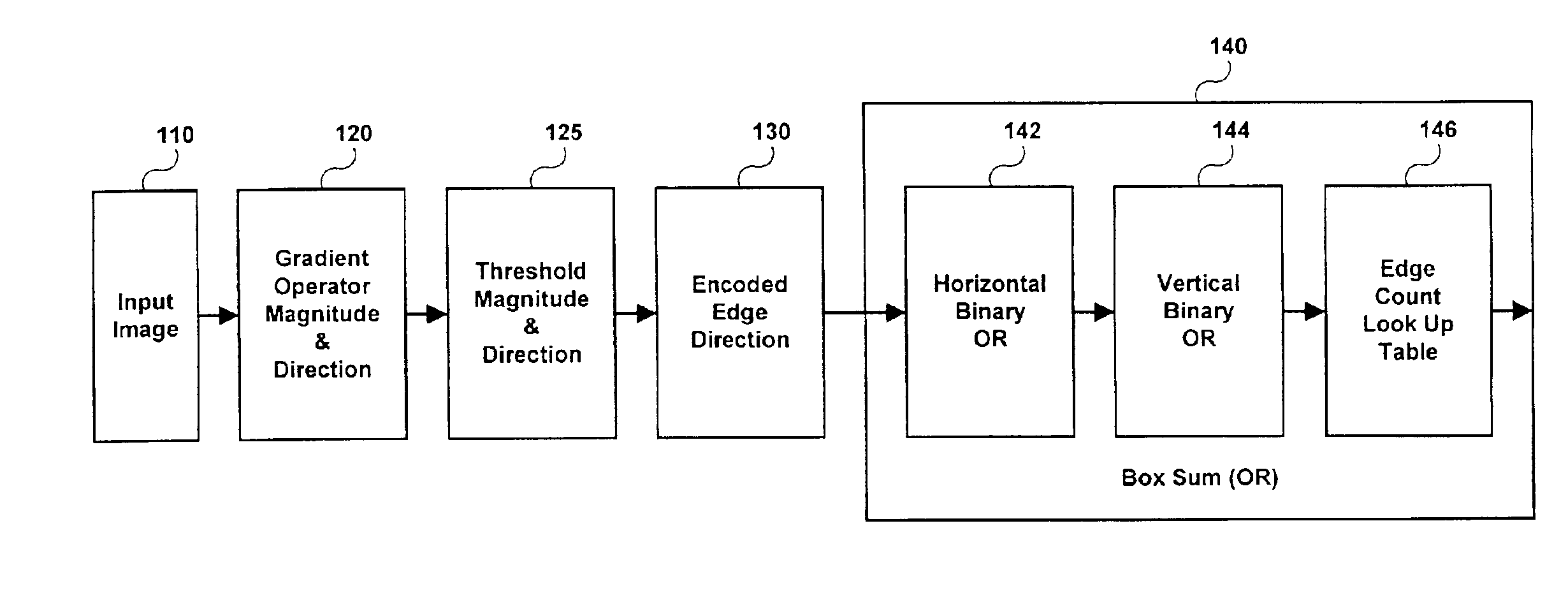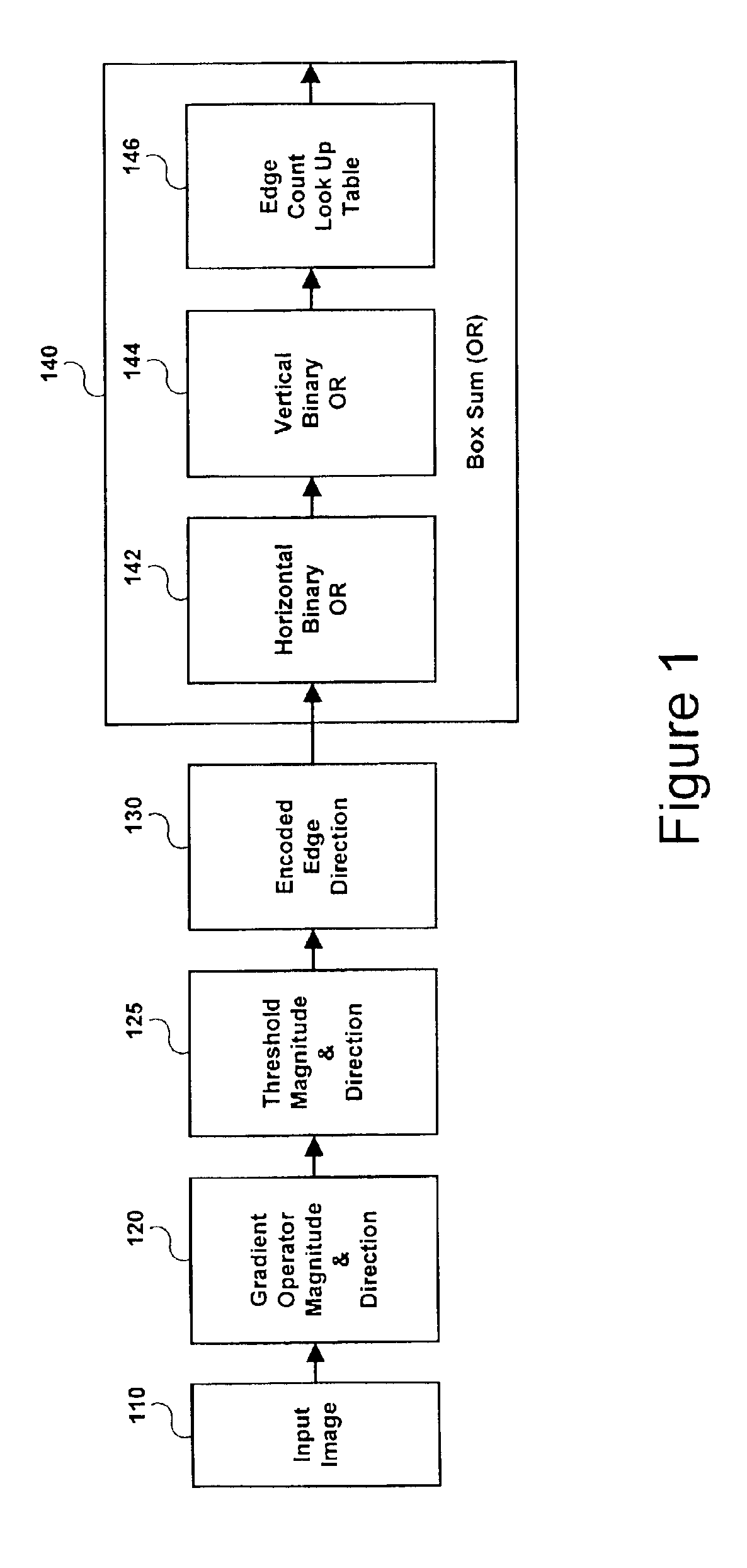Method and system for identifying objects in an image
a technology of object identification and image, applied in the field of image data processing, can solve the problems of considerable delay between images and human analysis, and achieve the effect of reducing the labor intensity of users and reducing the difficulty of image analysis
- Summary
- Abstract
- Description
- Claims
- Application Information
AI Technical Summary
Problems solved by technology
Method used
Image
Examples
Embodiment Construction
[0021]In accordance with exemplary embodiments of the present invention, portions of an image are processed to determine the number of different gradient directions present in the portion of the image. Through empirical analysis, it has been determined that closed objects, or nearly closed objects, in an image typically includes a predetermined number of different edge directions. For example, if the directions in an edge direction image are quantitized to one of eight unique directions, an object will normally comprise six, seven or eight different edge directions. It should be recognized that a quantitization of eight edge directions is merely exemplary, and that the present invention is equally applicable to other quantitizations, e.g., 16 or 32 edge directions. If other quantitizations are employed, the number of different edge directions used for identifying objects in an image can be determined by one of ordinary skill in the art through routine empirical analysis.
[0022]FIG. 1...
PUM
 Login to View More
Login to View More Abstract
Description
Claims
Application Information
 Login to View More
Login to View More - R&D
- Intellectual Property
- Life Sciences
- Materials
- Tech Scout
- Unparalleled Data Quality
- Higher Quality Content
- 60% Fewer Hallucinations
Browse by: Latest US Patents, China's latest patents, Technical Efficacy Thesaurus, Application Domain, Technology Topic, Popular Technical Reports.
© 2025 PatSnap. All rights reserved.Legal|Privacy policy|Modern Slavery Act Transparency Statement|Sitemap|About US| Contact US: help@patsnap.com



